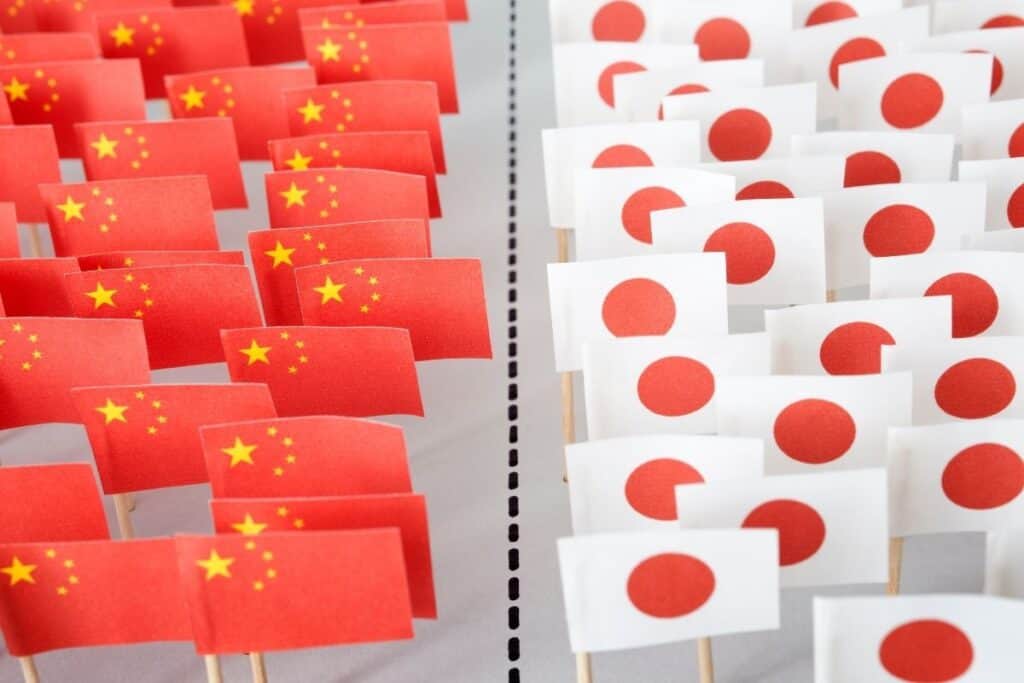
Chinese and Japanese are considered two of the hardest languages to learn. Yet, they are also two of the most popular among language learners.
Many experts claim that it takes thousands of study hours for native English speakers to become fluent in both of these languages when starting from scratch.
A common question from ambitious and time-conscious people alike is: can you learn both of these languages at the same time?
Learning Chinese and Japanese at the same time is achievable for some but by no means an easy endeavour. Learning both of these language systems at once requires extra time, energy, and resources that most (but not all) people would be best off using on one prioritised language.
If you’re an ‘ambitious Amber’ and learning one language at a time isn’t enough, a bit of dedication, hard work, and some tips from this blog post will get you well on your way to meeting your language goals.
Read on to learn if you have what it takes to learn Chinese and Japanese at the same time… I mean, you probably don’t, but I wish to be proved wrong!
Should You Learn Chinese and Japanese at the Same Time?
Suppose you are a language enthusiast or someone who dreams of being a polyglot.
In that case, the idea of waiting to master one language before starting to learn another may be very frustrating.
There are over 7000 languages, after all, and mastering a language can take anywhere from six months if you’re dedicated, to decades if you’re a more relaxed learner.
The good news is that your brain is capable of learning two languages at once. So in a way, it’s designed for it.
Think of all that time you spent in school learning and memorizing multiple subjects of new material. Imagine telling your teachers, “Sorry, I can learn geometry until I’ve mastered biology.” They would probably scoff and tell you to study harder.
Well, the same goes for language.
The real question here is not can you learn two languages at once, but should you?
While learning Chinese and Japanese at the same time is certainly possible, it’s not a task that should be taken lightly. Language learning requires daily study, and learning two languages means you will need to invest double the time.
What Challenges Might You Face?
Learning one language is hard on its own. It stretches your brain in completely new ways, and it takes time and effort to develop and perfect language learning skills.
However, if you plan on taking on both Chinese and Japanese at once, you may be faced with an entirely different set of challenges.
Motivation
Motivation is easily the biggest challenge for any language learner.
Most new language learners give up within a few short weeks for a variety of reasons, but I think it’s simply because learning a language isn’t very enjoyable for some people.
I’ve spoken before about the idea of learning a language being much, much better than actually doing it, and this is the most common cause of people quitting.
Make no mistake, learning Mandarin and Japanese at the same time will take a lot of hours with both languages.
If you love the process, then great. If you don’t, then find a way to love it or you’ll end up on the heap of quitters.
Japanese and Chinese May Be Less Familiar Languages
If you are new to language learning, it is often recommended that you start by learning a language similar to your own. If you are a native English speaker, Japanese and Chinese are basically as far away as it gets from English.
To start, the tonal nature of Chinese is a new concept for English speakers and can be an unfamiliar and difficult process to learn. Chinese is also a monosyllabic language, making listening a big challenge.
Japanese, while not tonal, follows a slightly different set of rules. Both languages have a pictographic writing system which is very different from the English alphabet.
I don’t tell you these things to put you off learning both languages. I tell you these things because you need to know what to expect. Again, the process will be challenging, but if you relish the challenge, it won’t seem like a challenge at all.
Chinese and Japanese Are Similar to Each Other
When learning two languages simultaneously, it is recommended that you choose languages that are quite different. This keeps you from mixing up the languages and creates less confusion in learning.
Chinese and Japanese, while different, also have quite a few similarities. For one, the writing systems share similar characters. The two languages have more than half of the writing characters in common. This is because Japan started by adopting China’s writing systems way back in the day, then eventually developed their own.
Honorifics are another thing the languages have in common. Chinese and Japanese emphasize honorifics, which is a more respectful way of speaking depending on age, familiarity, and social status. This isn’t seen in English and may take some time to get used to for native speakers.
Tips For Learning Chinese and Japanese Together
If you try to tackle learning two languages the same way you would learn one, you may find yourself getting nowhere fast. There are a few things you need to do differently if you’re learning two languages at once.
Study Both Languages Every Day
Studying every day is an important rule for those only learning one language, but it’s even more important for those learning two. Dedicating a bit of time to studying each language daily will make sure you maintain momentum while learning.
You need to accept that you are learning two languages at once and that things will take longer.
Avoid working on one language one week, then the other the next week. This has the potential to send you into a loop of playing catchup from week to week instead of moving forward with your learning.
Start with Listening
Mandarin Chinese and Japanese have sounds that may be new to you, depending on your native language. Spend the first month or two just listening to the languages so you can become familiar with how each one sounds.
A good way to do this is to watch tv shows and movies in the languages you are learning. Streaming sites like Viki and Netflix offer a list of shows from China and Japan that can be watched with subtitles in your native language.
If you’re looking for an extensive list of movies in Mandarin, TV shows, YouTube channels, and podcasts, check out the following posts:
- 57 of the Best YouTube Channels for Learning Mandarin Chinese
- Learn Mandarin with Film | 101 Awesome Chinese and Taiwanese Movies
- 100+ Podcasts for Learning Chinese | Beginner to Advanced Material
- 101 TV Shows for Chinese Learners | Drama, Action, Comedy, and More!
If you’re looking for similar suggestions for learning Japanese, by far the best blog on the subject is All Japanese All Of The Time.
Keep Time-Efficient Study Methods in Mind
Time is a valuable thing which mustn’t be wasted… That doesn’t stop us from watching news blooper compilation videos on YouTube for hours on end, but it’s still true.
If you’re learning two complex languages at the same time, you need to be time-efficient. To learn quickly, try to make use of SRS flashcard apps and sentence mining.
Beginner textbooks are also very useful.
I have no idea why so many people look down upon language textbooks. Sure, some are dreadful, but many of them are very well designed and perfect for beginner learners to progress in a logical fashion.
Good textbooks for beginner learners of both languages are:
Chinese Textbooks
Time Spent with the Language is What Drives you Forward
One of the few polyglots out there who isn’t an irritating booby head is the legendary Steve Kaufmann. He often preaches that time spent with the language is the most important factor for progressing in language learning.
Time spent with the language means reading, listening, writing, and speaking.
Time spent with the language doesn’t mean spending hours looking for the perfect set of flashcards or movie or podcast
Perfect study materials don’t exist.
Don’t waste your own valuable time. Engage with both languages as much as possible.
Bottom Line: The Only reason Not to Learn Both Chinese and Japanese at the Same Time is DESIRE
The idea of learning two languages simultaneously might not be for everyone, but those who have been successful in doing it have all had the same thing in common: they want it. Plain and simple.
Further Reading
- 100+ MANDARIN LEARNING RESOURCES: THE FASTEST WAY TO FLUENCY
- LEARNING CHINESE: 15+ LISTENING TOOLS PERFECT FOR BEGINNERS
- THE ULTIMATE GUIDE TO LEARNING CHINESE IN CHINA
- THE 24 BEST MANDARIN STUDY RESOURCES FOR BEGINNERS
- 14 REASONS WHY YOU SHOULD LEARN MANDARIN CHINESE
- IS IT EASY TO LEARN MANDARIN CHINESE?
- THE 21 BEST APPS TO LEARN CHINESE
- STUDYING MANDARIN AT A UNIVERSITY IN CHINA: WHAT YOU NEED TO KNOW
- 100+ PODCASTS FOR LEARNING CHINESE | BEGINNER TO ADVANCED MATERIAL
- 101 TV SHOWS FOR CHINESE LEARNERS
